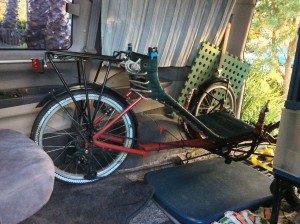We’re looking at the question when we help someone with a disability, how do we know when our help is appreciated? There are several factors that need to be taken into consideration – some to do with the person with the disability, and some to do with the helper. In the first half of this series, we’re focussing on the person with the disability. First, we’ve looked at the person’s stage in life. Then we looked at personal space. Help can be refused or accepted depending on the type of personal space.
This time, we’re looking at specific procedures. We all like to have particular things done in a certain way – do you dress your right foot first, or your left foot? Do you button your shirt top down, or bottom up? Do you put your glass to the left or right of the plate? For most people, this is only a matter of preference, and it really doesn’t matter. But for some people with disabilities, such procedures can mean the difference between possibility and impossibility, and the right procedure isn’t always obvious. Whether or not help is accepted can depend on how well the helper is able to identify the right procedure.
For instance, I’ll be honest, putting my trike (pushbike) into the back of my truck is a real hassle. I would love to have it done for me. But, unless I’m confident in the other person, I will flatly refuse any offers of help. Why? Procedures!! Let me explain: When I place my trike in the truck, it must go in back first, with the rear wheel (tadpole design – two wheels at the front, one at the rear) up against the driver’s side. There are two tie down straps that loop around the crossmember and hook onto themselves, and are fastened by friction buckles – one just by the tailgate, the other further in. The one further in determines the position of the trike in the truck, and is never adjusted. Only the strap by the tailgate is adjusted. As much of a hassle this is, this procedure allows me to get my trike in and out of my truck as quickly and as easily as possible. So why would I flatly refuse help?
Allow me to suggest a hypothesis. I say ‘yes’ to help, and allow the person to do as they see fit. They put my trike in front first, and wrap the tie down straps around the trike several times, finishing them off in a knot. They see the trike is secure, and go home content with the thought of how good it was to help me out and make my life easier. I come home to spend over an hour untying their knots and disentangling the trike, only to discover the chain has been pressed into the frame, and the chainring and peddles have damaged the rear seat of my truck.
Now, that is an extreme hypothesis, and thankfully that hasn’t happened. But smaller things like this have happened where I’ve found straps adjusted when they don’t need adjusting, and knots tied when they don’t need to be tied. So when procedures aren’t understood, help can actually make things more difficult.
When helping someone with a disability, it’s more than likely that the expert in the situation isn’t you, regardless of your experience or training. It’ll be the person you’re trying to help. So it’s worth asking the person what needs to happen, one step at a time if necessary. It’s also a good idea to reiterate the instruction back to the person to make sure you’ve understood correctly, especially if there are communication difficulties involved.

